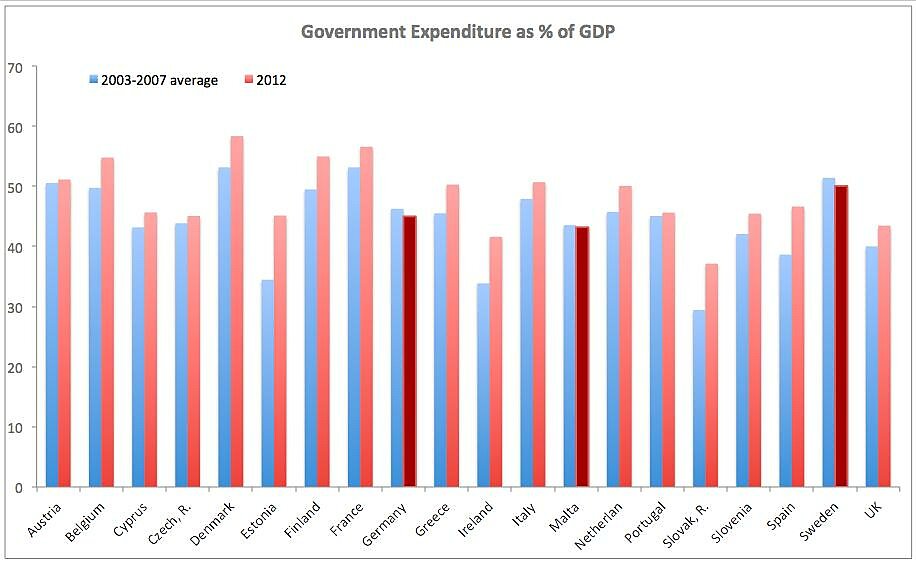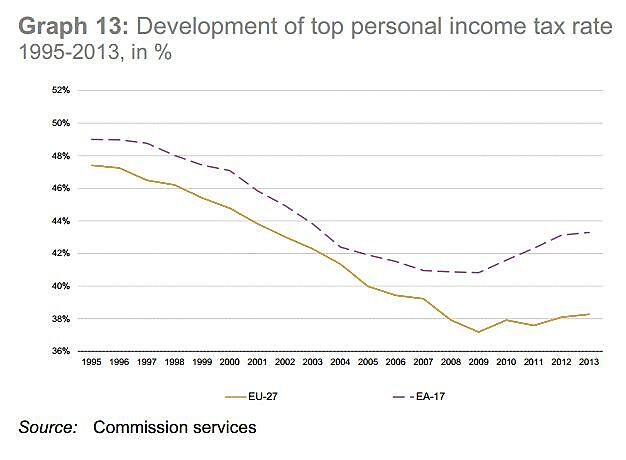Word is our pro-free-market brethren at the Heritage Foundation will release a new study on the fiscal impact of immigration reform in time for the congressional debate. It will be an update to a 2007 study that played a key role in derailing immigration reform then.
While the 2007 study was influential, it was fatally flawed, as I detail here. Hopefully Heritage’s updated version will correct for those criticisms and others, or else its analysis must be judged as lacking.
The key flaw in Heritage’s 2007 study is its use of static fiscal scoring, rather than dynamic fiscal scoring, to evaluate that year’s immigration reform bill. “Scoring” a bill means predicting its impact on the U.S. budget in the future by estimating how it will affect future spending and tax revenue. A statically scored prediction assumes the bill will not affect the rest of the economy – which is highly unrealistic.
A dynamically scored prediction, on the other hand, assumes that the bill will affect the rest of the economy, also changing tax revenue and government spending. Since increased immigration will increase the size of the economy, it will also increase tax revenue and some government spending. It’s important to factor those increases into any scoring model. Heritage’s 2007 study did not.
The Congressional Budget Office (CBO) has adopted dynamic scoring for the coming immigration bill for reasons they explain here. The best justification for using dynamic scoring comes from Ed Feulner, who only recently stepped down as head of the Heritage Foundation and retains an emeritus title there. He writes:
Indeed, some lawmakers are fighting a proposal that would require them to take real-world considerations into account. They prefer to keep ‘scoring’ each bill-estimating how it will affect the economy and the amount of taxes they take in-with the ‘static’ model used by the store owner’s friend. If, say, a 5 percent tax on something brings in $50 million, they assume a 10 percent tax will fetch $100 million.
Not surprisingly, this approach has caused lawmakers to come up with some wildly inaccurate assumptions over the years.
Feulner goes on to explain how numerous tax cuts actually produced more revenue despite static models predicting the opposite.
Can you imagine any private business acting this way? Of course not. That’s why it’s time Congress switched to a method many business owners use-‘dynamic scoring’-which assumes that if you change the way you do business, customers will react in relatively predictable ways. Before they’ve hiked a price or changed a product, most companies have a pretty good idea of how many customers they’ll gain or lose.
Would ‘dynamic scoring’ always give lawmakers perfect estimates? No, but it surely would get much closer to the true cost than “static scoring” does. If doubts remain, put it to the test: Have Congress produce ‘static’ and ‘dynamic’ scores of various pieces of legislation for a few years and see which prove more accurate.
Using dynamic scoring to predict the effects of legislation is as relevant for immigration reform as it is for tax cuts. Allowing more legal immigration, and legalizing those here, will increase the number of workers and entrepreneurs in the U.S., necessarily growing the size of the economy. Capital accumulation and land improvements then catch up to the population growth. Those effects boost GDP, ergo tax revenue.
A common retort to the above is that many new immigrants will be low-skilled and, because of our progressive tax system, will not pay much in taxes. Expanding the supply of laborers and entrepreneurs through immigration would increase profits, expand the production possibilities frontier, increase the return to capital, and raise incomes for most American workers who are complements. Thus, even if most future immigrants are low-skilled—and they likely will be—their positive effect on the economy would increase tax revenues indirectly.
Heritage’s former president supports dynamic scoring, and now so does the CBO, at least for immigration. For the sake of an honest debate, I sure hope Heritage’s upcoming report does too.

